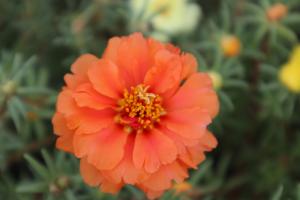Choosing the Optimal Location for Planting Hostas
Introduction
Hostas are a popular and versatile perennial plant that can add texture and color to any garden. However, to ensure their best growth and health, it is important to position them in the right location. One of the most common questions asked by gardeners is whether hostas prefer sun or shade. In this article, we will explore the pros and cons of planting hostas in both sun and shade and help you select the optimal location for your hostas.
The Case for Sun Exposure
Hostas are known to thrive in shade, but this doesn't mean they can't handle some sun exposure. Many varieties can actually tolerate some direct sunlight as long as they have enough moisture. In fact, sunlight can be beneficial for hostas in some ways. For one, it can enhance the colors of the leaves, making them more vibrant. Sun exposure can also reduce the chance of fungal diseases that can occur in overly damp or shady areas.
That being said, hostas should not be exposed to too much sun, especially during the hottest parts of the day. High levels of intense sunlight can cause the leaves to yellow or scorch, and can even kill the plant. If you plan to plant hostas in an area that receives some sun, make sure to choose a spot that gets morning or late afternoon sun, rather than midday sun. You may also want to consider planting taller plants around your hostas to provide some shade during the hottest parts of the day.
The Benefits of Shade
If you live in a hot climate, or just prefer low-maintenance plants, planting hostas in shade is probably the best option. Hostas love moist, cool soil and can grow well in areas that receive limited or indirect sunlight. Shade can protect hostas from excessive heat and drying out, which can lead to dying foliage and slow plant growth. Additionally, shade can extend the lifespan of the hosta plant by protecting it from sun damage and reducing the chances of drying out.
It's important to note that when we talk about shade, we're not talking about total darkness. Hostas grown in deep shade may not thrive as well as those planted in areas receiving some dappled light. If you want to plant hostas in full shade, it's recommended to choose a smaller variety that can handle less direct sunlight. Medium and larger hostas will need some indirect light to grow and maintain their beautiful colors and foliage.
Final Thoughts
So, where should you plant your hostas? As with most plants, the answer depends on your climate, preferences, and specific garden location. If you live in a hot, sunny area and want to plant hostas, consider planting them in an area that receives some morning or late afternoon sun. If you live in a cooler, shadier climate, hostas will thrive in any area with some indirect sunlight. In general, it's best to select a location with moist, well-drained soil and to mulch around the plant to retain moisture.
No matter where you choose to plant your hostas, make sure to give them adequate care and attention. Water and fertilize regularly, prune damaged leaves, and watch out for pests and diseases. With proper care, your hostas will reward you with spectacular foliage for years to come.

 how many times do yo...
how many times do yo... how many planted tre...
how many planted tre... how many pine trees ...
how many pine trees ... how many pecan trees...
how many pecan trees... how many plants comp...
how many plants comp... how many plants can ...
how many plants can ... how many plants and ...
how many plants and ... how many pepper plan...
how many pepper plan...































